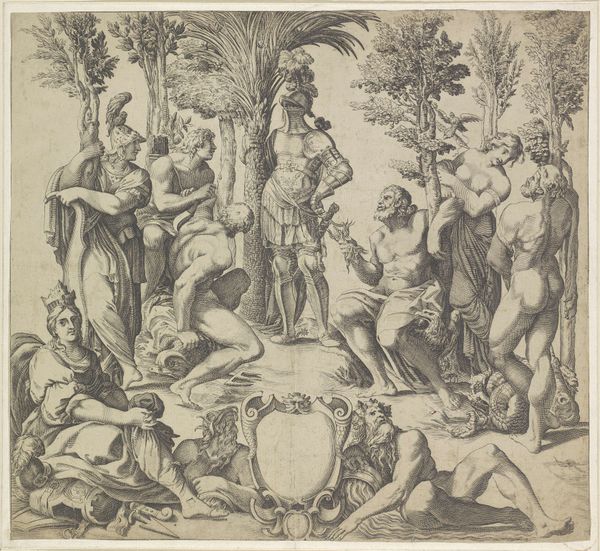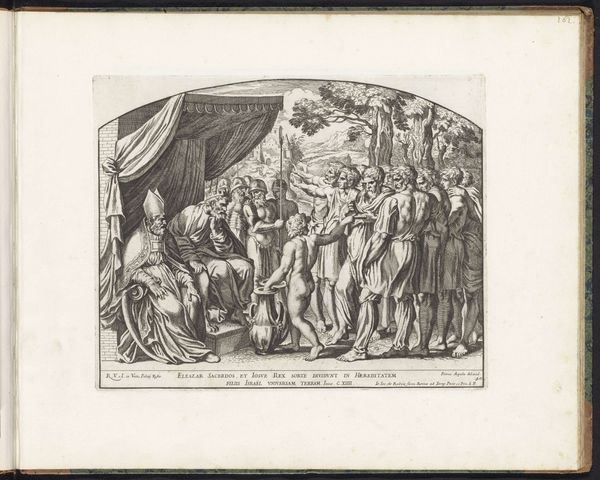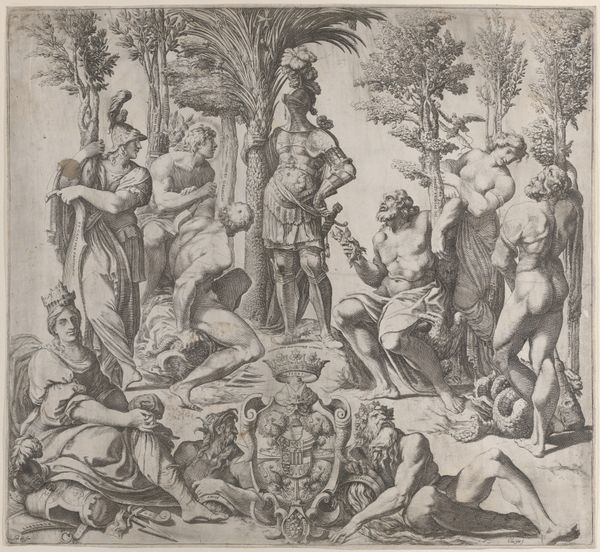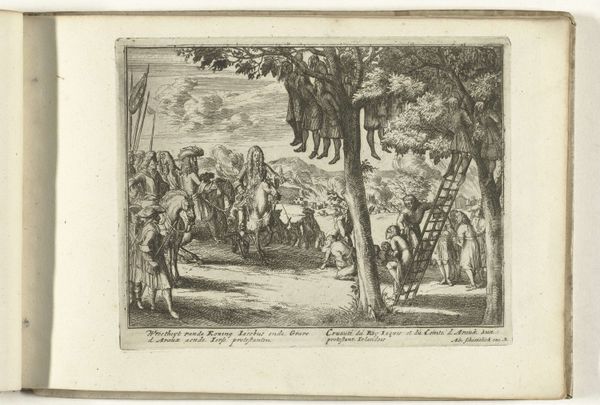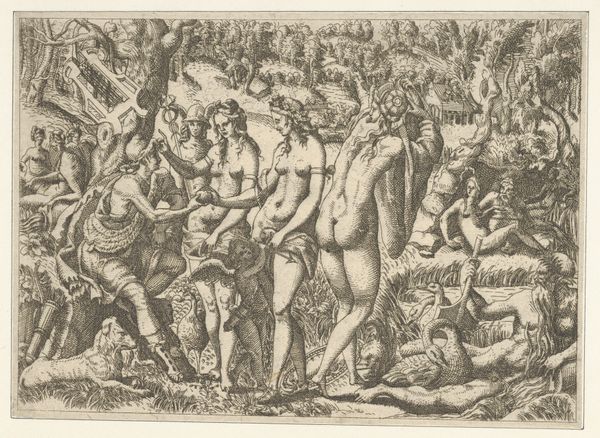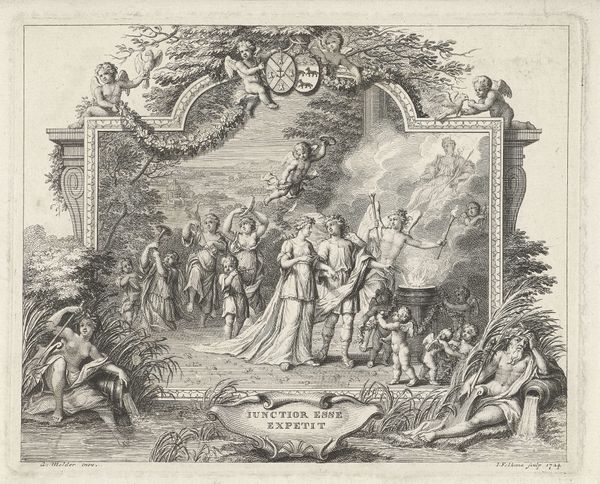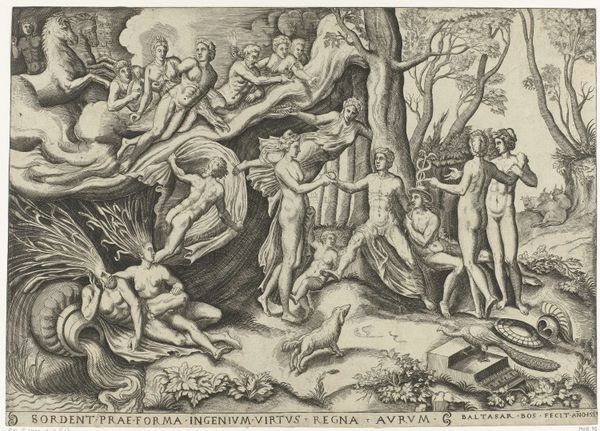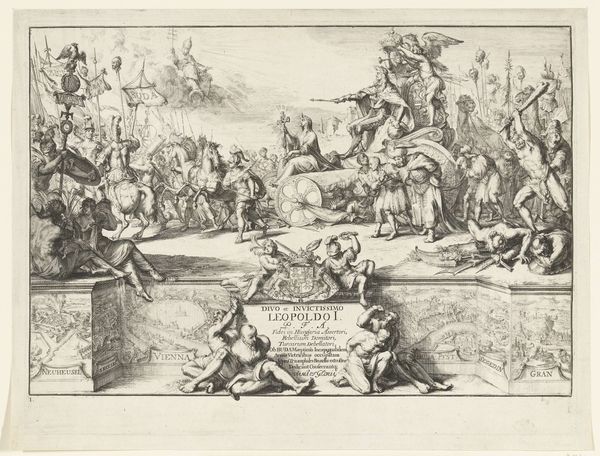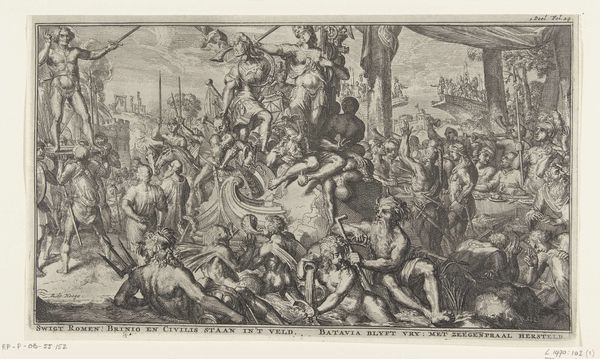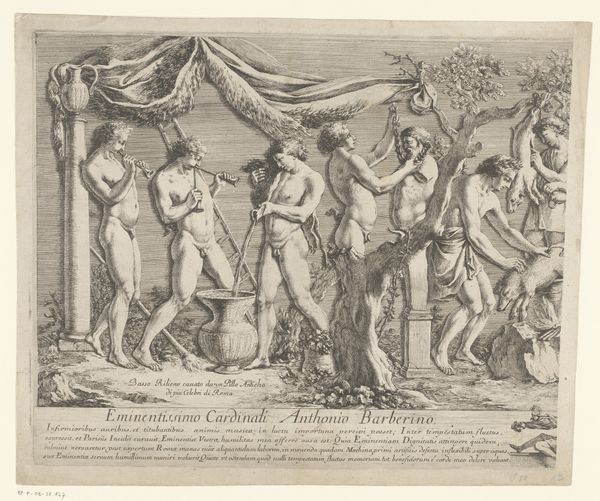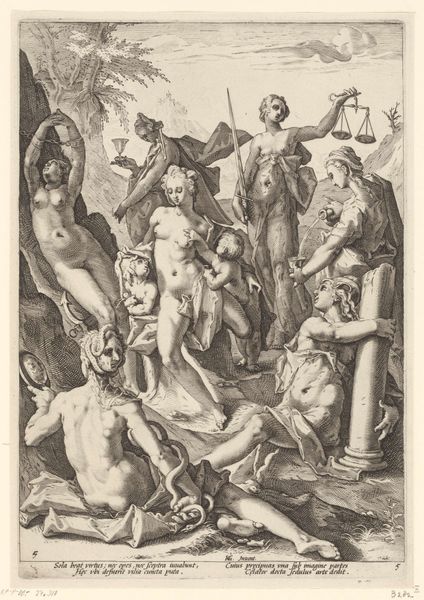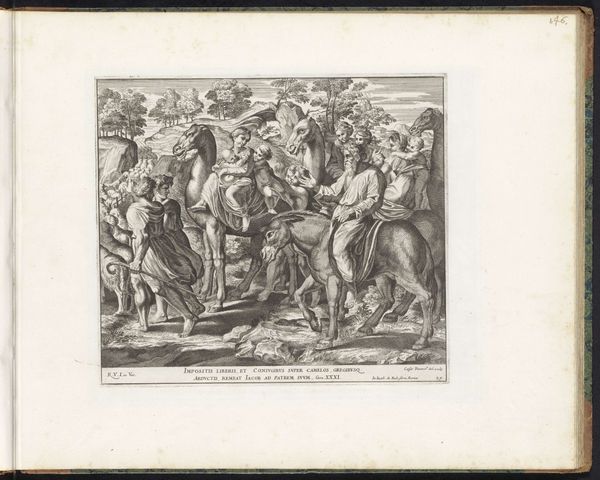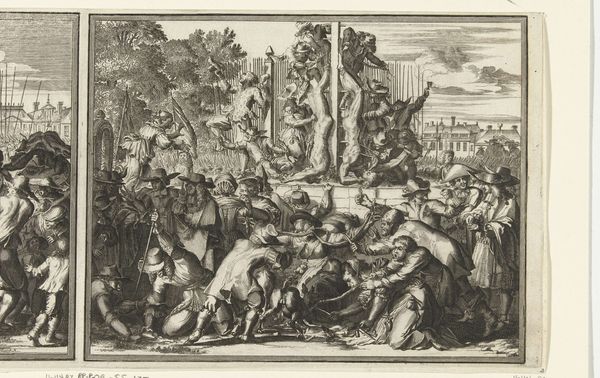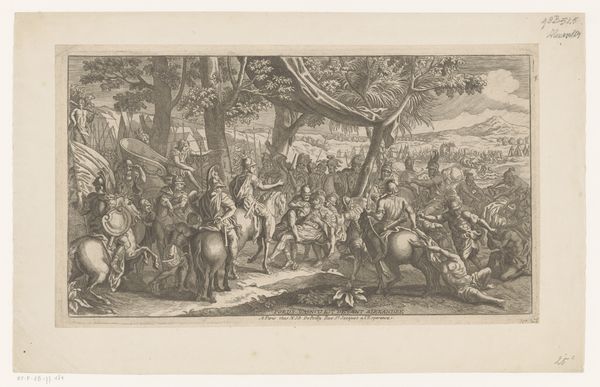
engraving
#
ink drawing
#
allegory
#
figuration
#
11_renaissance
#
genre-painting
#
history-painting
#
engraving
Dimensions: height 193 mm, width 265 mm
Copyright: Rijks Museum: Open Domain
Editor: This is "Triomf van de Wijn," made between 1564 and 1600 by an anonymous artist. It’s an engraving. It feels very processional and… celebratory, obviously, given the subject matter. What strikes you when you look at this piece? Curator: What interests me here is how this "triumph" reflects anxieties around pleasure and control. The Renaissance, while embracing classical imagery like Bacchus, also wrestled with the social implications of unchecked revelry. Who benefits from this "triumph," and who might be excluded or even exploited by it? Notice the range of social classes depicted. Editor: I see that. There are people who look like peasants and some dressed much more elegantly. What does it mean that they are together in what looks like a party? Curator: Exactly! Consider the role of the Church and aristocracy during this period. Did they use celebrations like this to reinforce social hierarchies or to create a sense of unity? This engraving gives a stylized depiction. How might a more realistic depiction reflect the complex relationship between the powerful and the powerless at that time? The labor it took to produce wine is definitely glossed over, isn't it? Editor: Absolutely, it's easy to miss that labor when you only see the finished product celebrated in this way. The image really does invite deeper thinking about the socio-economic dynamics in play. Curator: And that intersectional reading helps us see art as a reflection not just of beauty, but of power. What appears celebratory on the surface may be reinforcing existing power structures, even invisibly. Editor: That definitely makes me rethink how I initially viewed the work. It's much more complicated than just a party scene. Curator: Indeed. It is always worth digging a little deeper and using a work like this to reflect on the complex intersection of historical context and art.
Comments
No comments
Be the first to comment and join the conversation on the ultimate creative platform.
